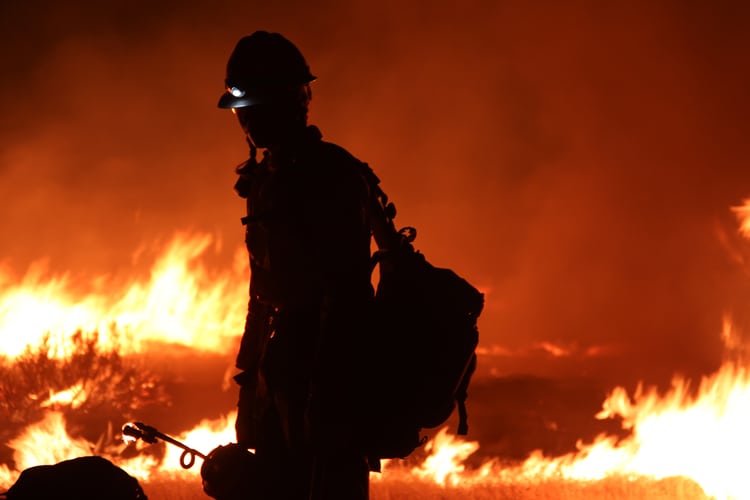When it comes to natural disasters, your business can’t afford to neglect to have a plan. What would happen to your business if a natural disaster struck right now? Make sure you’re ready with these preparedness and continuity planning tips.
Last year, the cost of natural disasters on the U.S. economy was over $300 billion. A storm isn’t fussy about the damage it causes – those costs will hit businesses like yours without prejudice.
That’s why it’s critical to have a business continuity plan to help you get back on your feet if the worst occurs.
If you’re wondering what to include in your own plan, here are 10 tips to help you get the continuity planning for your business right.
Determine Your Level of Risk
Unfortunately, businesses in Arizona are likely to be at increased risk of natural disasters compared to other areas of the country.
Excessive winds, earthquakes, wildfires – to name but a few.
If you’re worried about your emergency plan, you need to determine your level of risk from dangers like these and prepare for them. Are your premises in any areas of increased risk?
Is there a history of danger in your location? You should scope and determine the likelihood that you’ll lose access to basic facilities and utilities in the event of danger, such as power or road access.
This will allow you to build a business continuity plan that’s tailored to your own requirements.
Essential Functionality
If the worst does happen, what would the minimum requirements be for you to be able to get back up and running afterward?
Assess your essential functionality. If you’re running a retail or hospitality business, for instance, what would it take for you to be in a position to reopen and operate with a minimum number of supplies, employees or utilities available to you?
Don’t forget your physical cashflow situation. Banks, for instance, may not be able to restock you if you run out of coinage or paper dollar bills. What will you require to function in that scenario?
Make an emergency list of these ‘essentials’ to be able to adequately prepare for them.
Plan to Relocate
Unfortunately, a disaster could cause severe damage to your property. If you can’t run your business from your existing premises, do you have any contingencies for that?
If you run a retail store or a restaurant, you might find this difficult, especially in areas hit severely, but that doesn’t mean you should give up. See whether there are alternatives – even selling basic supplies from a tailgate!
For other kinds of businesses, you might find this an easier prospect. Service businesses, or online retailers, may be able to move their operations to other locations with much more ease.
You may even be able to get your employees to work from home, assuming their own conditions allow it. If the possibility exists, explore it, and have a carefully laid out plan ready to enable you to do it when required.
Stockpiling or Supply Preparation
What do you plan on doing if your business is left cut off from the outside world? What will you do if the supply chain to your business is disrupted, even in the short to medium term?
Again, this may be more relevant to certain business types than others, but if you’re reliant on regular deliveries, you should speak to any businesses that supply you to discuss their own disaster planning.
If you find that they’re not adequately prepared, you should look for other available options.
This may also include ensuring you keep essential supplies stockpiled, such as bottles of water and food, or a basic level of business supplies for sale.
This also affects your chain, too. Can you stock any customers or clients who are reliant on you for their own needs, or will this disrupt your business further? If you can put in place preparations to protect from this, you should do so.
Plans to Protect Employees
We’ve talked about products, supplies and keeping the business running following a disaster but you shouldn’t forget the human element.
This is, above all else, your most important point to consider. If you know a disaster is coming, make sure your employees take no risks. Get them home safely, and with plenty of time to spare.
If you can, ensure they make their own plans for disasters. You don’t want your employees at risk – they’re your biggest asset.
Keeping your employees safe can also play a part in your plans following a disaster. We’ve already suggested some relocation options for your business.
If your employees are well stocked and able to work from home (if your business allows it), you should consider whether you want them to or not. You should also make your employees aware of their role in your contingency planning so that they know what to do.
Supplies for Emergencies
Even the best plan in the world can’t prepare for the damage nature can bring. Your business needs to make sure it has vital emergency supplies to prepare for it.
What happens, for instance, if you or your employees can’t get home? That’s where your supply kit comes in. Food, water, first aid, and survival equipment like wind-up flashlights and radio equipment are essential here.
You also need to keep available a plentiful supply of food and medicine, just in case. From a business perspective, your essential documentation should also be kept available and safely secure, such as identification or financial documents.
Assume that you’ll lose all of your utilities in a disaster – that includes water and power. We’ve already suggested stockpiling essentials like water, but consider purchasing a diesel generator to give you some emergency power.
Not sure what else you need? This Red Cross guide to supplies for your survival kit should give you a few more ideas.
Emergency Communications
In an emergency, you need the essential lines of communications kept open and free from disruption.
That means making sure you can get hold of your employees and their next of kin. From a business standpoint, you also need to be able to contact emergency services, clients and customers when needed.
Crisis communication planning is vital to the success of your response plan. You may need to move fast to ensure disruption or danger is kept to a minimum, either before, during or after a disaster.
To make this easy, keep a copy of your vital contact numbers handy. This should include everyone you need to reach in an emergency situation.
Insurance for Damages
It’s important, especially if you work in an area of potential risk, to have the right insurance to cover your property and assets from any damages or losses that could occur in a crisis.
Keep an up-to-date list of all of your assets available, as well as estimations on value. This will help you when you speak to insurance agents about any replacements you require.
Be sure to combine this list with documentation confirming purchase dates, as well as photos of item condition and location, so you can cement any insurance claim.
You should also consider whether any disaster insurance cover you get will cover you for any loss of earnings during the period after a disaster.
IT and Data Backups
IT is central to the operation of most businesses these days, so it makes sense to include preparations for keeping your IT systems and data secure and backed up, assuming the worst were to happen.
Your data can’t be replaced if your on-site systems, including any data backups held at your premises, are damaged or destroyed. It can be replaced if you back up your essential data to a cloud-based backup service on a regular basis.
To help you find an adequate backup solution, check out this list of the best cloud backups for businesses.
This will mean that you won’t have to worry about your data in the event of a crisis situation.
That won’t replace your physical equipment, however. You should keep a select number of replacement kit (such as phones or computers) in a safe and secure location if it’s convenient to do so.
This will limit any disruption you face.
Regularly Test or Update Your Strategy
Your disaster plan needs to evolve as your business evolves. You should make sure it remains effective for your needs.
Some changes may be cosmetic, such as keeping contact lists up to date. Others might require more thought, such as keeping your supply lines open during an emergency.
You should take the time to do a thorough test of your strategy on a semi-regular basis. You don’t want to come to an emergency to find that your emergency kit is out of date, or you can’t get hold of the right people because they’ve changed their contact details.
For any new employees you take on, you should also keep them ‘in the loop’ and familiarise them with your plan.
Your plan is going to require strong leadership to implement, especially during a crisis. To help you take charge, here are 5 ways you can change your behavior to lead more effectively.
Make Your Continuity Planning Effective
Nobody wants the worst to happen, but ignorance isn’t bliss in this scenario. Failing to make your continuity planning effective is going to mean damage and disruption that could cost your business.
Protect your equipment and premises, and be sure to stockpile resources where it’s practical. Above all else, however, ensure that you have a plan to protect both you and your colleagues and to get everybody to safety.
Don’t forget these crisis management basics to help you keep a cool head and take charge during an emergency.
Do you have your own response plan tips or experiences to share? Drop us a comment below, and be sure to check out our other business stories and articles.




